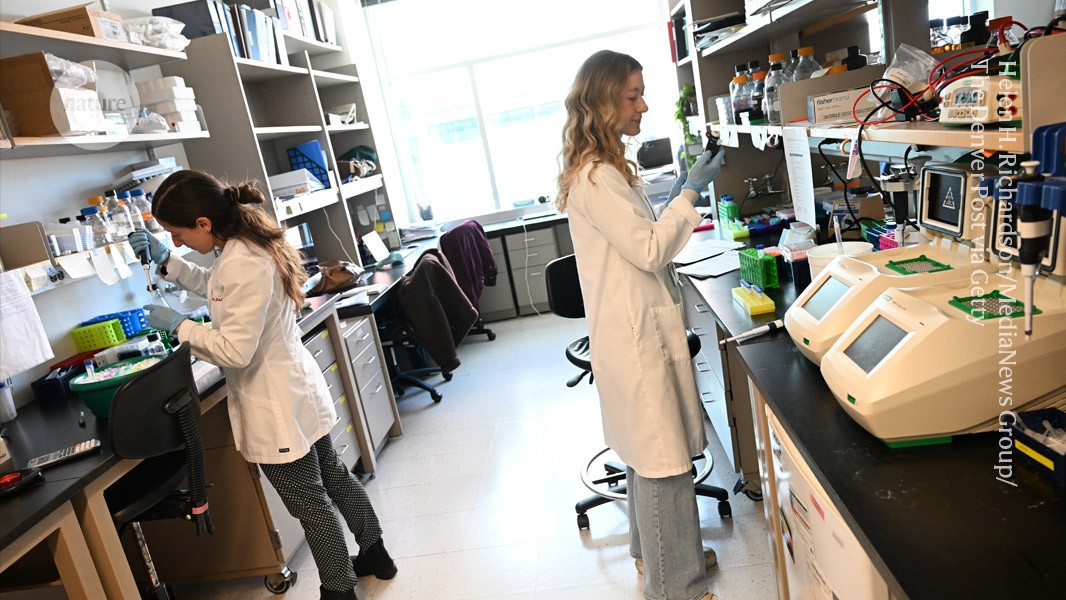Anno 117: Pax Romana hands-on preview – building a better Britain
Rome wasn’t built in a dayThe fan favourite city-building series takes a welcome step back in time to second century Rome, as Anno 117 puts you in control of ancient Britain.
Ubisoft’s Anno series, of historical city building sims, has quietly become one of the games industry’s hardiest perennials. Since 1998, it has mostly occupied a time period between the 15th and 19th centuries, albeit with two excursions into the future. Now, with Anno 117, it is poised to take a large step back in time, to when the Roman Empire was in full swing and enjoying a period of extended peace. This is important because, as Anno players will be aware, the series is all about building, not fighting.
We were given the chance to spend roughly three hours playing the new game, via Ubisoft’s streaming service on PC. Coming from the frenetic action of Doom: The Dark Ages, it felt like an oasis of tranquillity, with its considered gameplay requiring lots of thought and plenty of planning, along with a certain amount of waiting around for essential materials to be manufactured. As with all previous Anno games, it is very much a game for builders rather than destroyers.
Given the technological sophistication of the Roman Empire – particularly by the time it had reached the second century AD – it’s surprising that the Anno franchise hadn’t previously explored the time period, but it’s obvious from the start that it’s a good fit.
In the full game you’ll be given a choice between two areas of the Roman Empire, in which to establish your colony: Latiumor Albion – that is, what is now known as Britain. Much as we would have liked to have amazed the backwards natives by building a shiny Roman city on British shores, the constraints of the preview dictated that we would instead build in Latium.
As such, our ship pitched up at a pristine, procedurally generated Mediterranean island, complete with a beach which could be developed into a port, flat land for farming, plenty of forests, a prominent river, and some mountains which could be mined. The first task – since we were taking on the position of governor of the new city – was to build a governor’s villa to accompany the trading post that had already been built on the beach. Once that was done, the from-scratch city-building started in earnest.
Raw materials are obviously key, so a woodcutting operation was needed in the nearest forest, which has to be connected up to the trading post by road. As ever in a city-building game, close control over the network of roads is essential. Anno 117’s road-building system is exemplary – intelligent enough to let you curve roads to your satisfaction and snap them easily to form the connections they need to make.
With a woodcutter and a sawmill constructed, and wood therefore in plentiful supply, we could then start building a number of homes for the workers who form the lifeblood of the city. Build those homes and you’re able to establish a workforce. In its early stages, Anno 117’s tutorial makes its objectives clear: you need to build 10 houses to establish that workforce.
Unfulfilled criteria are clearly marked with little warning flags; Anno 117, mercifully, isn’t one of those strategy games which seems happy to leave you confused. After completing the tutorial, we were never at a loss as to what to do and the tutorial itself felt logical rather than manufactured.
With our first residential area constructed and hooked up via a road network, we could start turning our attention to the needs of our burgeoning populace. Food, obviously, was required, so we built a fishery and established a wheat farm, along with a bakery and a porridge kitchen.
We then began to have little interactions, as governor, with our inhabitants. We unlocked the ability to build a market and a tavern in the residential quarter, which bring helpful area effects. Pleasingly, what was now transforming from a village into a town began to exhibit some bustle, with carts of timber moving around and residents going about their daily work and heading to the tavern afterwards.
Ancient Albion on the fringes of the EmpireOur next task was to attract some more sophisticated, educated residents, by fulfilling a number of criteria in order to upgrade the basic housing. This brought considerations like fashion into the mix, by establishing a hemp farm and setting up a cloth-spinner. More sophisticated building materials such as tiles were also required, so we built a charcoal kiln and, on one of the river slots highlighted in the game’s geography, cleared a clay heap
As that extended the city limits somewhat, it was necessary to build another warehouse. And we had to keep an eye on the mix of our population, between the basic Liberti and the more sophisticated Plebeians, by building more houses and upgrading some of them.
Now that our town was really starting to take shape a level of exploration and interaction with other nearby enclaves came into play, with governors of nearby provinces appearing – giving us opportunities to indulge in diplomacy. Other residents then started asking to be ferried around the world map in the starting ship, which had previously remained moored as we established the basic structure of our town.
More Trending
During the tutorial period, we had concentrated on establishing a basic settlement rather than engaging in trade, so had been forced at one point to accept a loan from our superior in Rome. As the game progresses, trading becomes an increasingly important mechanism in the push to build a more sophisticated city. At this point you are given the ability to not only establish trade routes but also set religious criteria, by picking a preferred god to worship from the Roman pantheon.
Even three hours in, we were quite happy with the progress we had made towards imposing a decent level of civilisation upon previously uninhabited territory. Those initial three hours with Anno 117: Pax Romana proved very satisfying and enjoyable. Although the series predates the phrase cosy game, it’s definitely that, while also being reminiscent of even older franchises like The Settlers.
For a city builder, Anno 117 fells pretty exemplary in terms of its interface, which is clear and logical. It looks great and, with the local interactions and the trade route engine, offers more gameplay variety than most similar games. At the moment, it hasn’t been given a specific release date, but Ubisoft has said that it will come out this year on both consoles and PC.
Formats: Xbox Series X/S, PlayStation 5, and PCPublisher: UbisoftDeveloper: Ubisoft MainzRelease Date: 2025
Ocean trading is an important gameplay elementEmail gamecentral@metro.co.uk, leave a comment below, follow us on Twitter, and sign-up to our newsletter.
To submit Inbox letters and Reader’s Features more easily, without the need to send an email, just use our Submit Stuff page here.
For more stories like this, check our Gaming page.
GameCentral
Sign up for exclusive analysis, latest releases, and bonus community content.
This site is protected by reCAPTCHA and the Google Privacy Policy and Terms of Service apply. Your information will be used in line with our Privacy Policy
#anno #pax #romana #handson #previewAnno 117: Pax Romana hands-on preview – building a better Britain
Rome wasn’t built in a dayThe fan favourite city-building series takes a welcome step back in time to second century Rome, as Anno 117 puts you in control of ancient Britain.
Ubisoft’s Anno series, of historical city building sims, has quietly become one of the games industry’s hardiest perennials. Since 1998, it has mostly occupied a time period between the 15th and 19th centuries, albeit with two excursions into the future. Now, with Anno 117, it is poised to take a large step back in time, to when the Roman Empire was in full swing and enjoying a period of extended peace. This is important because, as Anno players will be aware, the series is all about building, not fighting.
We were given the chance to spend roughly three hours playing the new game, via Ubisoft’s streaming service on PC. Coming from the frenetic action of Doom: The Dark Ages, it felt like an oasis of tranquillity, with its considered gameplay requiring lots of thought and plenty of planning, along with a certain amount of waiting around for essential materials to be manufactured. As with all previous Anno games, it is very much a game for builders rather than destroyers.
Given the technological sophistication of the Roman Empire – particularly by the time it had reached the second century AD – it’s surprising that the Anno franchise hadn’t previously explored the time period, but it’s obvious from the start that it’s a good fit.
In the full game you’ll be given a choice between two areas of the Roman Empire, in which to establish your colony: Latiumor Albion – that is, what is now known as Britain. Much as we would have liked to have amazed the backwards natives by building a shiny Roman city on British shores, the constraints of the preview dictated that we would instead build in Latium.
As such, our ship pitched up at a pristine, procedurally generated Mediterranean island, complete with a beach which could be developed into a port, flat land for farming, plenty of forests, a prominent river, and some mountains which could be mined. The first task – since we were taking on the position of governor of the new city – was to build a governor’s villa to accompany the trading post that had already been built on the beach. Once that was done, the from-scratch city-building started in earnest.
Raw materials are obviously key, so a woodcutting operation was needed in the nearest forest, which has to be connected up to the trading post by road. As ever in a city-building game, close control over the network of roads is essential. Anno 117’s road-building system is exemplary – intelligent enough to let you curve roads to your satisfaction and snap them easily to form the connections they need to make.
With a woodcutter and a sawmill constructed, and wood therefore in plentiful supply, we could then start building a number of homes for the workers who form the lifeblood of the city. Build those homes and you’re able to establish a workforce. In its early stages, Anno 117’s tutorial makes its objectives clear: you need to build 10 houses to establish that workforce.
Unfulfilled criteria are clearly marked with little warning flags; Anno 117, mercifully, isn’t one of those strategy games which seems happy to leave you confused. After completing the tutorial, we were never at a loss as to what to do and the tutorial itself felt logical rather than manufactured.
With our first residential area constructed and hooked up via a road network, we could start turning our attention to the needs of our burgeoning populace. Food, obviously, was required, so we built a fishery and established a wheat farm, along with a bakery and a porridge kitchen.
We then began to have little interactions, as governor, with our inhabitants. We unlocked the ability to build a market and a tavern in the residential quarter, which bring helpful area effects. Pleasingly, what was now transforming from a village into a town began to exhibit some bustle, with carts of timber moving around and residents going about their daily work and heading to the tavern afterwards.
Ancient Albion on the fringes of the EmpireOur next task was to attract some more sophisticated, educated residents, by fulfilling a number of criteria in order to upgrade the basic housing. This brought considerations like fashion into the mix, by establishing a hemp farm and setting up a cloth-spinner. More sophisticated building materials such as tiles were also required, so we built a charcoal kiln and, on one of the river slots highlighted in the game’s geography, cleared a clay heap
As that extended the city limits somewhat, it was necessary to build another warehouse. And we had to keep an eye on the mix of our population, between the basic Liberti and the more sophisticated Plebeians, by building more houses and upgrading some of them.
Now that our town was really starting to take shape a level of exploration and interaction with other nearby enclaves came into play, with governors of nearby provinces appearing – giving us opportunities to indulge in diplomacy. Other residents then started asking to be ferried around the world map in the starting ship, which had previously remained moored as we established the basic structure of our town.
More Trending
During the tutorial period, we had concentrated on establishing a basic settlement rather than engaging in trade, so had been forced at one point to accept a loan from our superior in Rome. As the game progresses, trading becomes an increasingly important mechanism in the push to build a more sophisticated city. At this point you are given the ability to not only establish trade routes but also set religious criteria, by picking a preferred god to worship from the Roman pantheon.
Even three hours in, we were quite happy with the progress we had made towards imposing a decent level of civilisation upon previously uninhabited territory. Those initial three hours with Anno 117: Pax Romana proved very satisfying and enjoyable. Although the series predates the phrase cosy game, it’s definitely that, while also being reminiscent of even older franchises like The Settlers.
For a city builder, Anno 117 fells pretty exemplary in terms of its interface, which is clear and logical. It looks great and, with the local interactions and the trade route engine, offers more gameplay variety than most similar games. At the moment, it hasn’t been given a specific release date, but Ubisoft has said that it will come out this year on both consoles and PC.
Formats: Xbox Series X/S, PlayStation 5, and PCPublisher: UbisoftDeveloper: Ubisoft MainzRelease Date: 2025
Ocean trading is an important gameplay elementEmail gamecentral@metro.co.uk, leave a comment below, follow us on Twitter, and sign-up to our newsletter.
To submit Inbox letters and Reader’s Features more easily, without the need to send an email, just use our Submit Stuff page here.
For more stories like this, check our Gaming page.
GameCentral
Sign up for exclusive analysis, latest releases, and bonus community content.
This site is protected by reCAPTCHA and the Google Privacy Policy and Terms of Service apply. Your information will be used in line with our Privacy Policy
#anno #pax #romana #handson #preview













